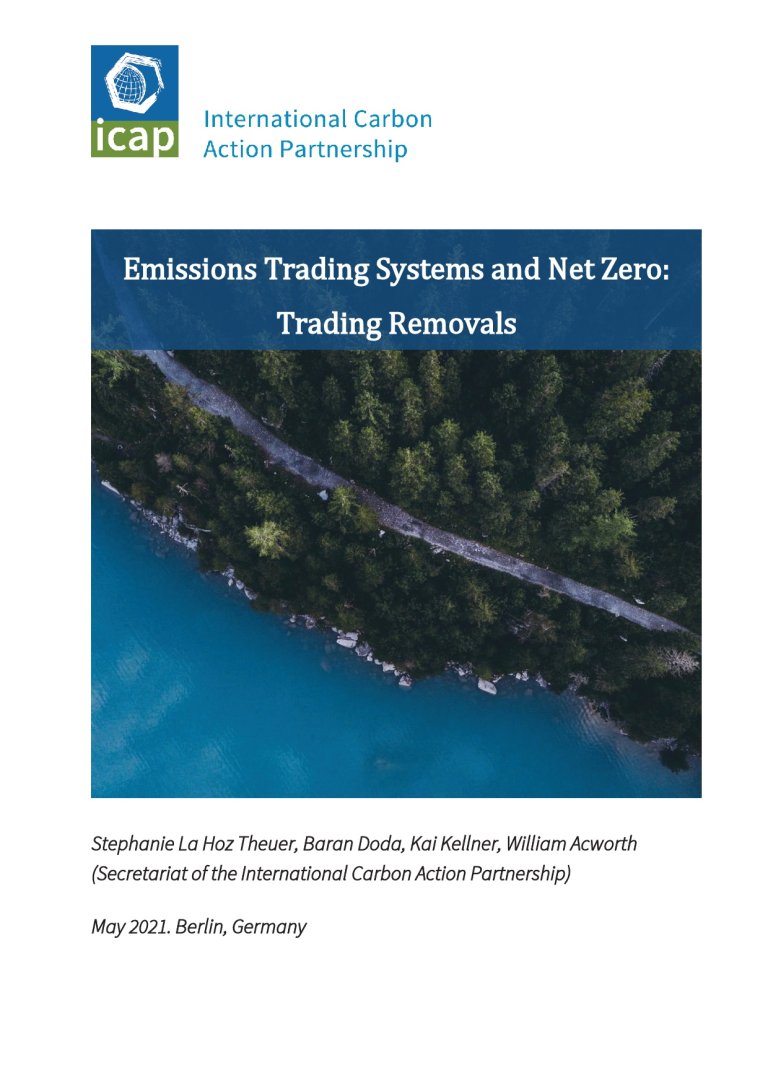Emissions Trading Systems and Net Zero: Trading Removals


Category
Topics
Release date
Language
To stand a good chance of limiting warming to 1.5°C, global CO2 emissions must reach net zero by 2050. Achieving net zero requires making deep cuts in emissions across all sectors and regions and that any residual emissions be compensated by carbon dioxide removals (CDR) by negative emission technologies (NETs). Overall, achieving a mid-century 1.5°C target indicates the need for cumulative removals in the range of 100 to 1000 GtCO2e before 2100 - the equivalent of approximately 20 years of current annual GHG emissions. Heeding these challenges, currently 124 countries worldwide as well as several regions, cities and companies have implemented or are considering implementing net zero targets.
While removals are undoubtedly part of the “net” zero equation, there is not yet consensus on the appropriate balance between removals and emission abatement, the different NETs that could be used, or which policy tools are best suited to foster their research, development and deployment at the required scale. Emissions trading systems (ETSs) are among the policy tools that have proven most effective in reducing emissions, however, their ability to contribute to the achievement of net zero targets is yet to be tested.
In this new ICAP paper, we seek to better understand how net zero targets and removals could interact with emissions trading, as well as the opportunities and challenges such interaction could present for the operation of ETSs. To that end, we first review the current state of net zero targets as well as the emerging academic and policy debates in this area. We then turn to describing the broad classes of NET options and various policies and instruments to support their research, development and deployment. Finally, we conceptualize different models (see graphic below) for the possible interactions between the markets for allowances and removal units. These models are compared against possible policy objectives. The paper concludes with a set of issues that would merit further research.
